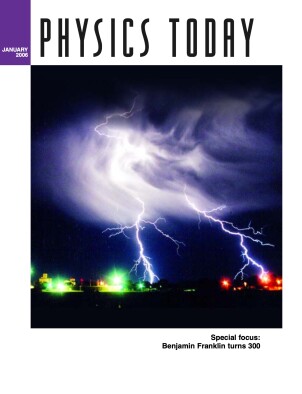Optical vortex coronagraph
DOI: 10.1063/1.4797280
Astronomers would like to view extrasolar planets directly without any annoying glare from the parent star, in much the same way that the Sun’s faint corona is best seen during an eclipse. A typical star looks like a fuzzy blob of light—an Airy disk—due to the various optical elements in the telescope. A nulling coronagraph uses an occulting mask in an intermediate focal plane to remove starlight by shifting its phase over some part of the Airy disk. Grover Swartzlander and his colleagues at the University of Arizona propose to replace such a mask with a “vortex phase mask” to produce a helical phase front. Light passing through the thicker central part of the mask is slowed down and, because of the graduated shape of the glass, an “optical vortex” is created: The light coming along the axis of the mask is, in effect, spun out of the image. The Arizona optical scientists have shown that in the absence of scattering or aberrations, such a device can extinguish any magnitude of starlight while letting the light from a resolved companion planet through, even if the two objects differ in brightness by a factor of 10 million. (G. Foo et al. Opt. Lett. 30 , 3308, 2005 http://dx.doi.org/10.1364/OL.30.003308

